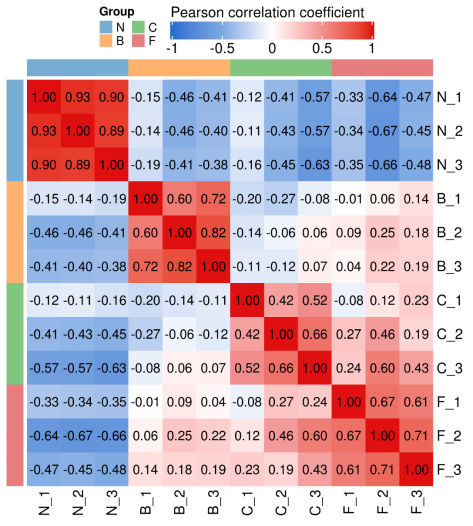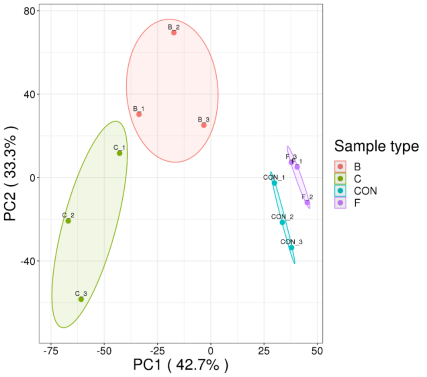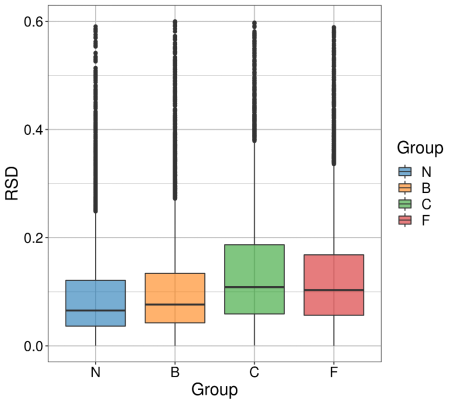Interested in our services
Contact our experts to provide further information




For experiment with biological or technical replicates, it is necessary to evaluate the quantitative reproducibility among the biological or technical replicates. Three statistical analysis methods including Principal Component Analysis (PCA), Relative Standard Deviation (RSD) and Pearson's Correlation Coefficient (PCC) were used to evaluate the repeatability reproducibility.

Figure shows the pairwise pearson correlation coefficients of the samples. The correlation coefficient is a dimensionless metric and its value ranges from -1 to +1. The closer it is to +1 or -1, the more closely the two samples are related. If there is no relationship at all between two samples, then the correlation coefficient will certainly be 0.

Figure shows the principal component analysis results of protein quantitation in all samples (PCA). The closer the repeated samples from one group are aggregated, the better the repeatability is.

Figure shows the box plot of the relative standard deviation (RSD) of quantitative values among replicates. The smaller the overall RSD value is, the better the quantitative repeatability is.
Interested in our services
Contact our experts to provide further information
